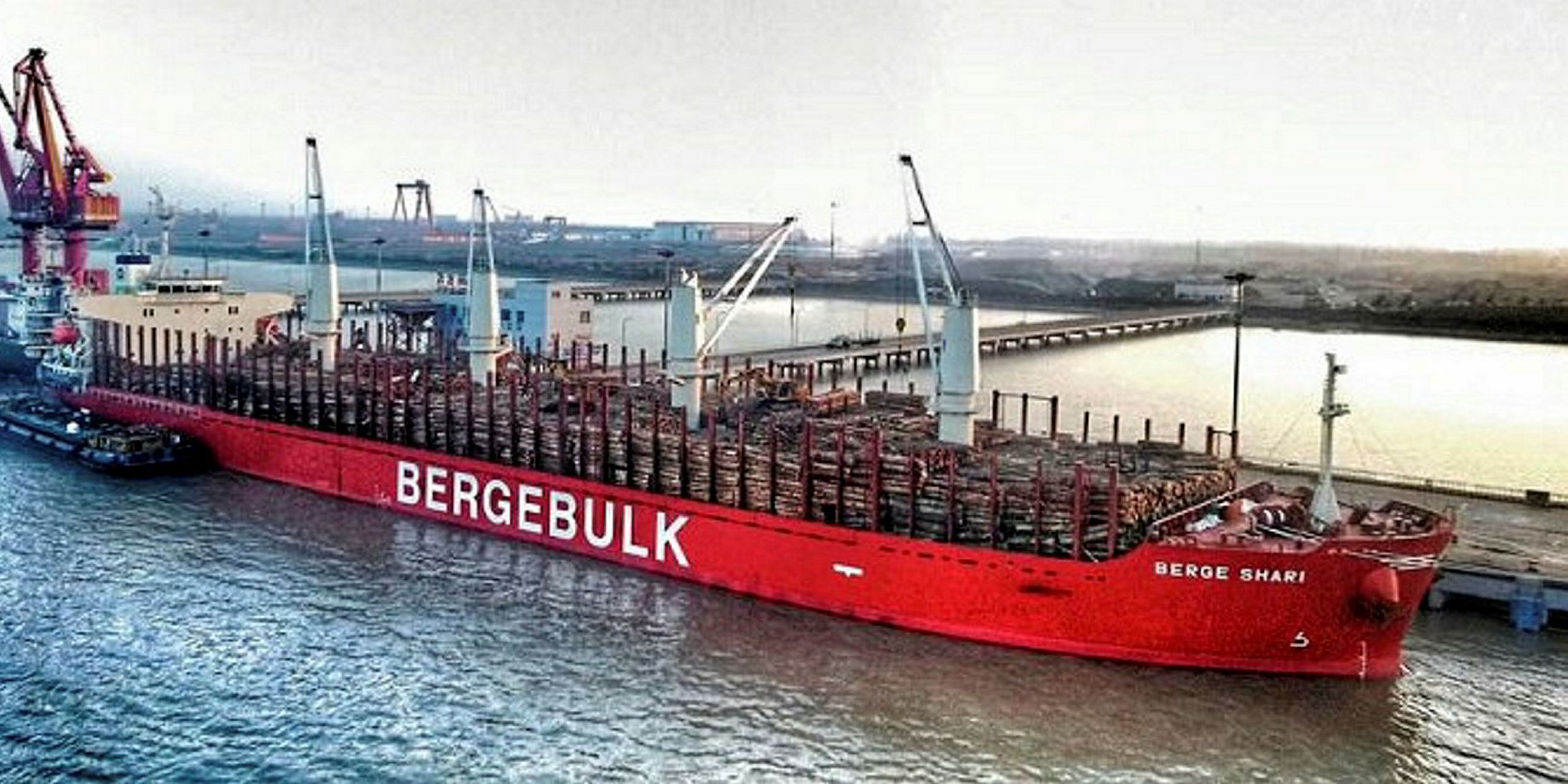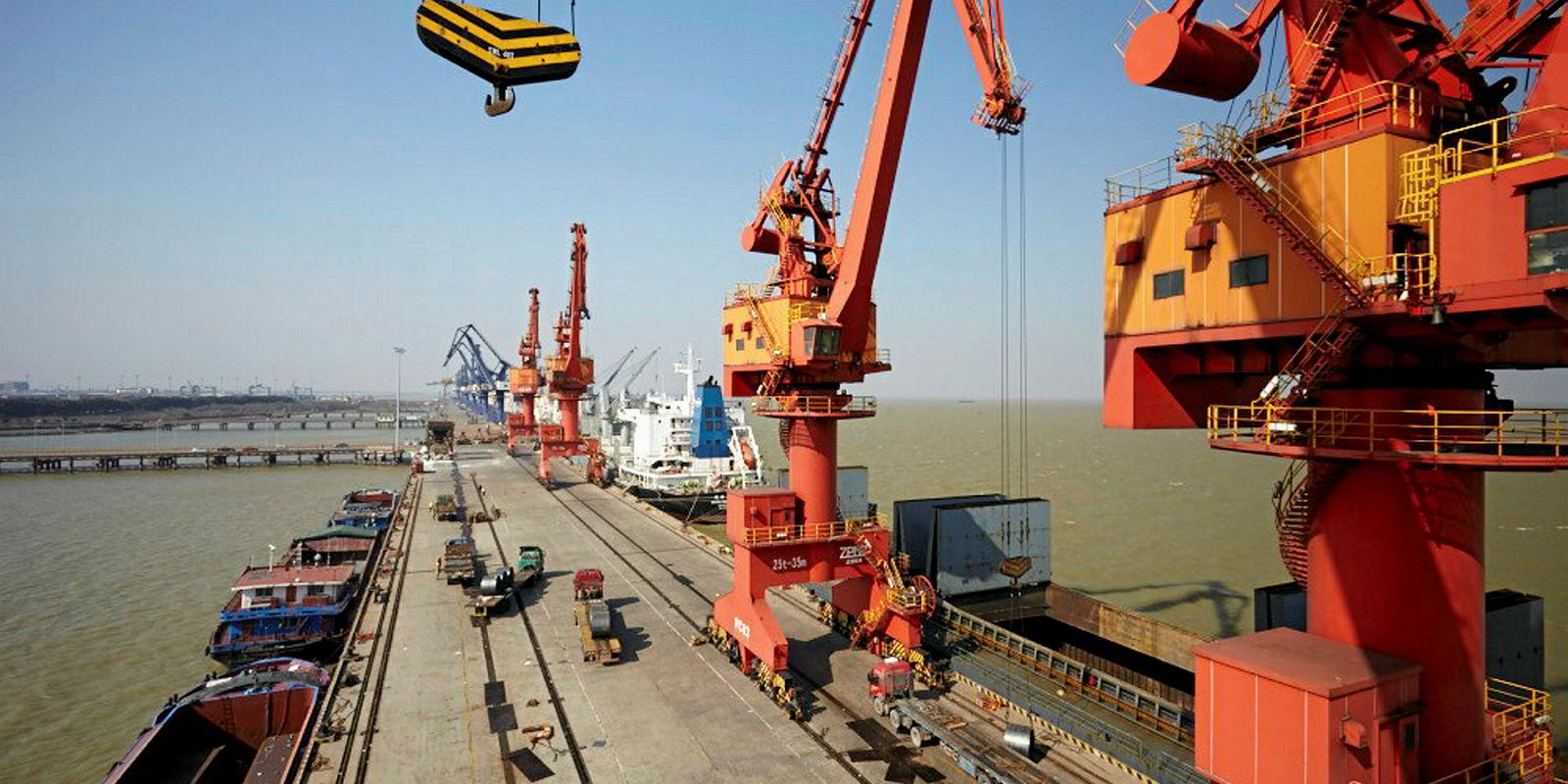Congestion at China’s four main ports for log imports is creating delays of up to two weeks for handysize vessels. But the cause of the logjams is unclear.
Some shipowners blame Beijing, which last year reorganised all of the public ports in Jiangsu province into a single group.
Others cite a variety of issues, from the repurposing of reorganised ports to the state’s acquisition of bankrupt private facilities and an overall growth in the volumes of log imports.
Removing incentives
On the one hand, a leading Chinese shipowner in the log trade who spoke on the condition of anonymity, said the integration of ports would prove a chronic efficiency issue for bulk and general cargoes, removing incentives which once drove competition.
“In the old days, all Chinese ports had their own balance sheets, and each port was quite aggressive even though they were all state owned. After the ports came under the same umbrella last year, marketing people no longer had their salary and bonuses related to the individual port’s revenue.”
Where ports once focused on incentives, he said, they have now turned their attention to risk avoidance, particularly since the Changshu log terminal disaster, which claimed four workers’ lives. “Now, no one is trying to get cargo, but pushing it away,” the Chinese shipowner added.
On the other hand, another of the biggest log players, Hong Kong-based Pacific Basin Shipping, said it had not seen any long-lasting ill effects of the reorganisation, at least not at the ports where it calls.
After the ports came under the same umbrella last year, marketing people no longer had their salary and bonuses related to the individual port's revenue. Now, no one is trying to get cargo, but pushing it away
Chartering director Surinder Brar explained one Jiangsu port is in the process of shifting from logs to containers, and that this has led to some hiccups. While managing director Mats Berglund added congestion could, in part, be down to overall growth in log imports, which for Pacific Basin is up by 12% to 13% over last year.
Two different trades
The difference in perspective is, to some degree, down to the fact there are two separate log trades, one for tropical and another non-tropical cargoes. They are carried by two overlapping sets of shipowners, and delivered at different ports.
New Zealand business, for example, is an open trade, in which any owner with suitable tonnage can compete. Leading participants include Guangzhou-based Cosco Shipping Specialized Carriers, Pacific Basin, Swire’s China Navigation and Oldendorff Carriers, which trades with chartered-in tonnage.
Tropical West Africa, on the other hand, is in the hands of specialists including Cosco Guangzhou, Hong Kong and Shanghai-based Asia Maritime Pacific, and small Chinese players. Papua New Guinea business is similar, while South Pacific island markets are served by specialists with one or two ships each.
Tropical and non-tropical logs arrive in China mostly through the four Jiangsu province river ports of Taicang, Changshu, Zhangjiagang and Jingjiang, and are trucked to inland mills largely in Shandong.

Annual capacity at each port is in the range of three to five million cbm per year.
Taicang and Changshu, just upriver of Shanghai, receive New Zealand and North American logs.
Tropical logs go upriver to Zhangjiagang and Jingjiang, which is where the Chinese-based handysize owners that dominate the African log trade have reported the severest congestion.
Tropical log oriented owners said the severity of the problems at Zhangjiagang may be masked by the recent takeover of bankrupt private facilities that artificially doubled capacity.
Out of the woods
Downriver, Taicang is in the process of becoming an all-container port, and this indirectly caused congestion in October that spread to other ports.
We are not seeing any unusual log discharge delays other than related to fumigation in Taicang
Brar thinks the non-tropical log trade is out of the woods now, so to speak.
“We are not seeing any unusual log discharge delays other than [those] related to fumigation in Taicang where the local mayor earlier this month, after much delay and waiting in the past several months, agreed to extend the permit for fumigation for another 1.5 years,” Brar told TradeWinds. “The mayor also stated there is no possibility of extension thereafter.”
However, by the time Taicang fumigates its last log, other terminals should be available.





